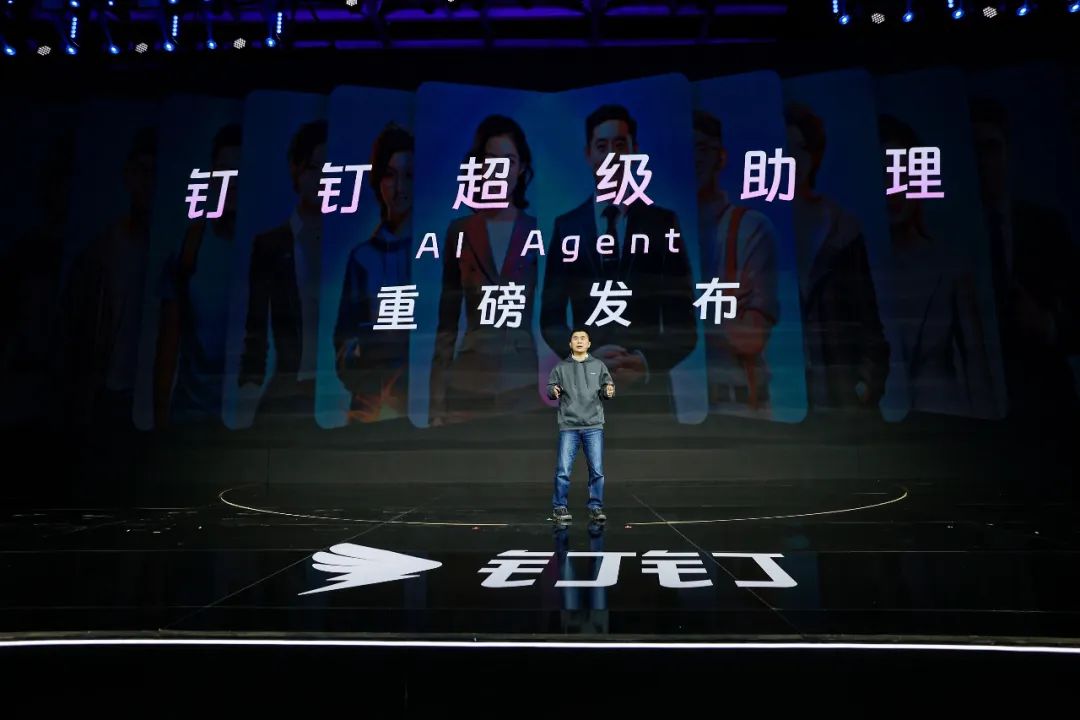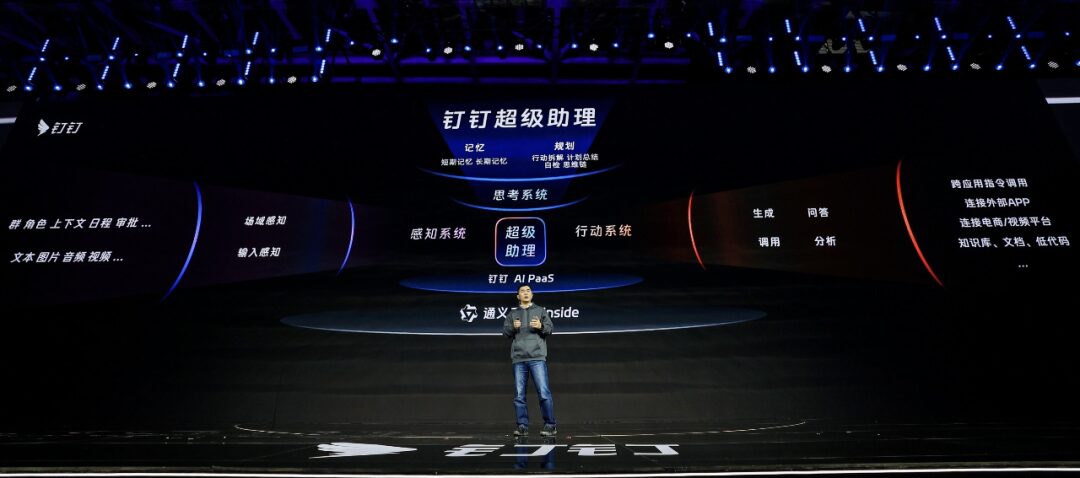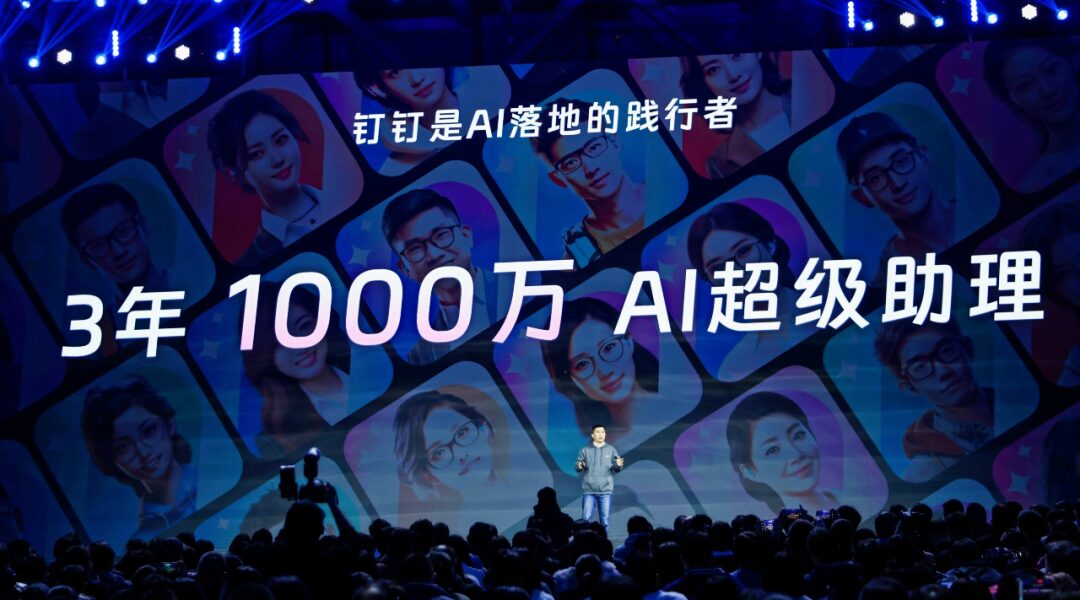
Click “Chief Information Officer”, thank you for following us!

Introduction

Last year, I had the privilege of experiencing the grand gathering of global SaaS practitioners – the Dreamforce 2023 conference. With over 1100 speeches, almost every one was related to AI. All the guests spoke eloquently about their applications, sharing how to reconstruct SaaS with data + scenarios + AI.
Shocking, right?
This is the future that is happening!
However, while most people are still struggling to figure out how AI will reconstruct enterprise software and drive office and business SaaS towards intelligent platforms, a new AI model is gradually approaching outside the spotlight.
It has been described by Bill Gates as “a shockwave in the tech industry”, “the biggest transformation in the computer field after the change from ‘input commands to clicking icons'”; it has even led OpenAI and Microsoft to place their bets, causing domestic giants to flock.
This is the AI Agent, hailed as the second half of artificial intelligence and the end of large model applications.
In the future, no AI Agent, no SaaS

Before discussing AI Agents, we must talk about the development history of generative AI and large model technology. In just one year, they have experienced three waves of tides.
At the end of last year, the emergence of the GPT model stirred up a thousand layers of waves. Subsequently, global entrepreneurs quickly followed suit, pushing technology to a higher value blue ocean, leading to the second wave of application layer innovation.
In this short cycle, productivity scenarios became the best carriers for new models and new technologies, rapidly forming a plethora of enterprise-level applications. Of course, in the domestic market, DingTalk’s AI Magic Wand is the most eye-catching. Its popularity proves a point: intelligent technology has truly begun to move from the consumer side to the enterprise level, extending from Chat to Work.
In the second half of last year, enterprise-level large models emerged one after another. The third wave of AI penetrating business scenarios followed closely. Almost all enterprises and vendors wanted to use it to serve the real economy and drive themselves from digitalization to intelligence.
However, even though the level of intelligence in software has made great strides, you will still find that they are often “very dumb”. Because, no matter what you want to do, whether working or arranging personal life, you need to jump back and forth between different SaaS applications and apps, clicking around in menus.
Just then, AI Agents appeared to solve this problem. Thanks to the development of AI technology, Agents have become feasible. Therefore, in DingTalk’s latest assessment, AI Agents will become the best entry point for SaaS applications.
To quickly enter the race, DingTalk’s president Ye Jun announced at the recently held 7.5 product launch that DingTalk will fully follow the trend of AI Agents, creating a low-threshold, high-frequency, open AI intelligent assistant platform, allowing users, developers, and ISVs to independently develop personalized AI Agents.

At the same time, DingTalk has launched an AI assistant market, creating a richer value exchange model. This means that DingTalk’s official AI assistants, those built by ecological partners and developers, as well as those created by individual users, will all be included. Moreover, in this market, AI assistants generated based on the ecosystem will have more advantages because they are more aligned with the industry and better understand vertical field scenarios.
In fact, such measures embody DingTalk’s consistent principle of openness, not only transforming itself into a platform with AI vitality and innovation, sharing benefits, but also helping the ecosystem to produce more excellent AI applications, thus becoming the birthplace of the next Midjourney and Pika in the global SaaS industry!
“Super Assistant”, Reshaping Efficient Work and Life with AI

In fact, in the first half of the large model, due to the constraints of technology, models, and ecosystem development, the response to AI Agents was not enthusiastic. But once the big players followed suit, the situation became uncontrollable. Can you imagine that in Stanford’s “Westworld” town, 25 AI Agents walk, date, chat, drink coffee, and share the day’s news every day?
The so-called AI Agent is an intelligent entity capable of perceiving the environment, making decisions, and executing actions. Unlike traditional AI, AI Agents have the ability to independently think and call tools to gradually achieve given goals. Especially after the emergence of large models, AI Agents have once again achieved breakthroughs, establishing broader automation capabilities in interacting with the environment, making proactive decisions, and executing various tasks.
No one will question that AI Agents truly unleash the potential of large models, providing action power for their strong core. And DingTalk’s newly launched intelligent product – AI Assistant, confirms this.
According to the official definition, DingTalk’s AI Assistant is an AI application that can respond to natural language and make planning decisions based on understanding user or enterprise data and business, in order to complete complex tasks. With selectable large language models, DingTalk’s AI Assistant has perception, memory, planning, and action capabilities, and also has cross-application task execution capabilities, seamlessly integrating with DingTalk’s rich native applications, third-party applications, and enterprise self-built applications.

For example, in terms of perception ability, after obtaining authorization, the AI Assistant first acquires the employee’s work context information, such as chat, schedule, to-do, documents, tasks, etc.; secondly, it conducts in-depth learning of this information, the location, and the matters involved; then, based on the work scenario, it automatically executes tasks such as scheduling, information summarization, and business processes.
Taking memory ability as another example, the AI Assistant can automatically generate results or conduct data analysis and execute tasks by continuously learning and remembering personal or organizational exclusive knowledge. At the same time, it can improve the generation and execution effects of tasks such as creation, meetings, and to-dos by integrating short-term memory of context during daily use.
DingTalk emphasizes that as a new application form in the exploration of AI Agents, the AI Assistant can belong to individuals or enterprises. Regardless of who it is, everyone has the right to customize a personalized, exclusive super assistant.
For instance, everyone can create multiple personal AI assistants simultaneously. By learning different knowledge, they will have specific professional capabilities in different fields, serving different roles such as work AI assistant, travel AI assistant, fitness AI assistant, etc.
With them, you can get help writing work summaries, work documents, initiating meetings, thus improving work efficiency. Of course, you can also give them instructions to help book flights and hotels, thereby arranging your itinerary more quickly.
Internally, each department can have its own dedicated AI assistant, such as recruitment AI assistant, finance AI assistant, production AI assistant, which can combine with the enterprise’s accumulated knowledge base and business data to conduct data analysis and insights in a conversational manner.
Moreover, enterprise AI assistants also support permission configuration, allowing for the selection of visibility and usage scope during creation, with the minimum support of assignment to specific personnel. Additionally, it can connect with DingTalk’s open APIs, connectors, ecological applications, native applications, etc., to achieve cross-application and cross-system business process operations.
So, with such clear value, how difficult is it to create an AI Assistant? DingTalk tells you, it only takes three steps.
The first step is to customize a unique name and avatar for the AI Assistant; the second step is to select specific knowledge bases, documents, or upload files to train the AI Assistant; the third step is to configure the required AI capabilities for the AI Assistant.
DingTalk states that they have preset high-frequency official AI capabilities for creating AI Assistants, such as intelligent Q&A, image generation, content creation, data statistics, etc., which users can use as needed. For developers and IT teams, custom AI assistants can also be quickly developed based on DingTalk AI PaaS.
New SaaS Going Upward While Traditional SaaS Goes Downward

Last year, the global SaaS market encountered an unprecedented “great freeze”. However, the injection of AI, driven by large models, has torn a hole for the industry. Under this, a new SaaS era has arrived!
What is “new SaaS”? It may be difficult for us to define it with a standard definition, just as everyone has their own interpretation of “Hamlet”. However, based on current trends, new SaaS will present three major characteristics.
First, fragmentation. The SaaSification of ERP systems that support enterprise management and business has brought about a fundamental change in software design thinking. This means that an increasing number of rich new SaaS applications that meet various scenarios will emerge. Unlike the “high and mighty” ERP, they will actively appear in human-computer interaction interfaces, giving users a sense of accessibility.
Second, simpler interactions. Large models have opened the era of LUI, that is, natural language user interfaces. This also provides a unified entry point for new SaaS. Through natural language interaction methods such as conversation, voice, and photos, it will directly achieve human-computer collaboration, replacing the traditional functional menu model.
Some may ask, didn’t some SaaS applications support voice interaction before the emergence of large models? Please don’t forget that enterprise needs are very complex; traditional graphical user interfaces, even if they load some voice input functions, are still difficult to cover every user’s scenario within the enterprise. This is why natural language interaction can quickly become popular.
Third, AI Agents will become standard. They are the direction for large models to land and have begun to drive new SaaS vendors to reconstruct product architectures and business models.
“Based on AI PaaS, a large number of user-type AI Agents will emerge on DingTalk, which is also the mainstream form of future SaaS applications. They can shop, order food, complete business processes in bulk, achieve organizational management, knowledge base management, and even automate interactions with external systems,” Ye Jun said.

The Author’s Note: Comprehensive Intelligence, Not Just Talk
In the near future, any individual or enterprise will be able to have an AI-driven “super assistant”, whose capabilities will far exceed today’s technological level.
In fact, as early as 1995, Bill Gates mentioned “intelligent agents” in his book “The Road Ahead”. It is only today that we have created its landing form. Especially in terms of productivity, DingTalk has made AI Agents the assistants in individual work. It simplifies tasks in various scenarios, directly connecting to various services based on demand.
“With the arrival of the AI era, DingTalk will gain unprecedented imagination.” This is a comment from Alibaba Group CEO Wu Yongming, who directly expresses his love and emphasis on DingTalk. This can be seen from the first batch of four strategic innovative businesses announced by the group, as DingTalk was listed among them for the first time.
DingTalk has also lived up to expectations. Since announcing comprehensive intelligence last April, by the end of the year, it delivered an impressive performance:
17 product lines have been transformed;
DingTalk AI PaaS has been fully opened to ecological partners and customers, building “digital employees”, as well as multiple intelligent scene applications and industry solutions;
The first national-level AI work application in China – DingTalk AI has officially launched. During its testing phase, it has already been adopted by over 500,000 enterprises, covering nearly 70 scenarios and close to a hundred AI skills.
With the evolution of AI technology, DingTalk’s pace of intelligence will accelerate. At the beginning of 2024, DingTalk’s personal version AI has been fully launched, allowing everyone and every enterprise to customize their exclusive super assistant with DingTalk 7.5 products.
Although we must admit that making such a complex AI Agent a reality poses many challenges and issues for DingTalk, we still have hope that in the new SaaS era, DingTalk is expected to become the best AI intelligent assistant platform in the world.
About the Chief Information Officer
/ Click the image to learn more
The public account “Chief Information Officer” was founded by a senior media person, dedicated to using professional writing, precise insights, distinctive services, and in-depth practices to serve the digital intelligence field of enterprises, igniting “micro-light” for the development of the industry!
